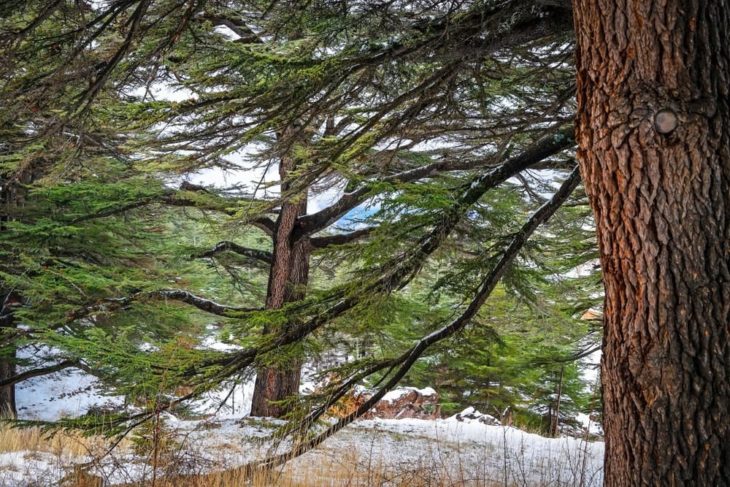The Holy Tale Behind the Cedars of Lebanon

Cedar of Lebanon is an ancient wood with a fascinating story to tell, appearing in many folklore myths as well as canonical texts. But what exactly is the holy history of this rare wood, and what is its spiritual importance in different cultures and religions?
What is the Cedar of Lebanon?
Revered by civilisations for thousands of years, the Cedar of Lebanon is a rare wood with a natural lustre and distinctive, long-lasting odour. In biblical times, this ‘true cedar’ grew extensively all around the mountains of Lebanon, giving the cedar its name. After centuries of deforestation, there are now just a handful of groves remaining, most notably the Cedars of God, a UNESCO World Heritage site which is now under threat from climate change.
For thousands of years, the cedar’s 70-100 foot height and 16-25 foot girth have inspired thoughts of strength and solidarity, with the wood widely used for shipbuilding by various ancient civilizations. Today, the national emblem of Lebanon is equally revered by woodworkers, who find its medium to coarse texture, prominent grain, characteristic knots and high levels of durability perfectly suited to cabinet-making and joinery.
Biblical Stories & Cedar Symbolism
In the Old Testament, the ‘true cedar’ is mentioned numerous times, adding to the myth and folklore that surrounds this ancient tree. In 1 Kings 4:33, Solomon made the cedar the ‘first of trees’, while in Isaiah 35:2, the cedar was referred to as the ‘glory of Lebanon’.
In Ezekiel 31:3-5, The Assyrian power is compared to ‘a cedar in Lebanon with fair branches, and with a forest-like shade, a high stature; and its top was among the thick boughs… its stature was exalted above all the trees of the field; and its boughs were multiplied, and its branches became long.’
Solomon used the wood of the cedar to build Jerusalem. In 1 Kings 5:6-10, it’s said that ‘Hiram gave Solomon timber of cedar and timber of fir according to all his desire’, while one of Solomon’s most important buildings was known as ‘the house of the forest of Lebanon’ (1 Kings 7:2).
The Cedar of Lebanon is also mentioned in reference to ritual cleansing. In Leviticus 14:4, the cleansed leper was sprinkled with the blood of a ‘clean bird’, into which had been put ‘cedar wood, scarlet and hyssop’.
The Epic of Gilgamesh
The Cedar of Lebanon also features in the oldest epic written by man, The Epic of Gilgamesh, which dates back at least 4,000 years. The Cedar Forest was a divine, shady forest that was fought over by demi-gods and humans. It’s said that the cedars were protected by Mesopotamian Gods, which gave rise to another name for the trees – the Cedars of God. It is also said that Gilgamesh himself used cedar wood to build his great city.
‘On the Mountain the cedars uplift their abundance. Their shadow is beautiful, is all delight. Thistles hide under them, and the dark prick-thorn, sweet-smelling flowers hide under the cedars … in all directions, ten thousand miles stretches that forest …’
(Leonard Translation, slightly modernised)
Mummification of Ancient Egyptians
Not to be outdone, the ancient Egyptians also made use of this famous tree. The Egyptians desperately sought immortality and wanted to be spoken of long after their death. To achieve this, Egyptians used mummification to strip the body of its organs, except the heart, and preserve their physical form.
Cedar resin and sawdust was used in the embalming process due to its powerful bactericidal and fungicidal activity, with the enzymes in the wood capable of surviving for thousands of years. This would have helped to preserve the bodies and provide safe passage into the afterlife.
A Beautiful Addition to any Modern Project
The Cedar of Lebanon is not resigned to the canonical texts and myths of yore. This rare, high-quality timber, which is soft, easy to work and has an unforgettable scent makes an outstanding and beautiful addition to any modern project. Although rarely available in the UK, we’re delighted to offer Cedar of Lebanon at Thorogood. To find out more, please get in touch with our team.
Blog | 7 years AGO